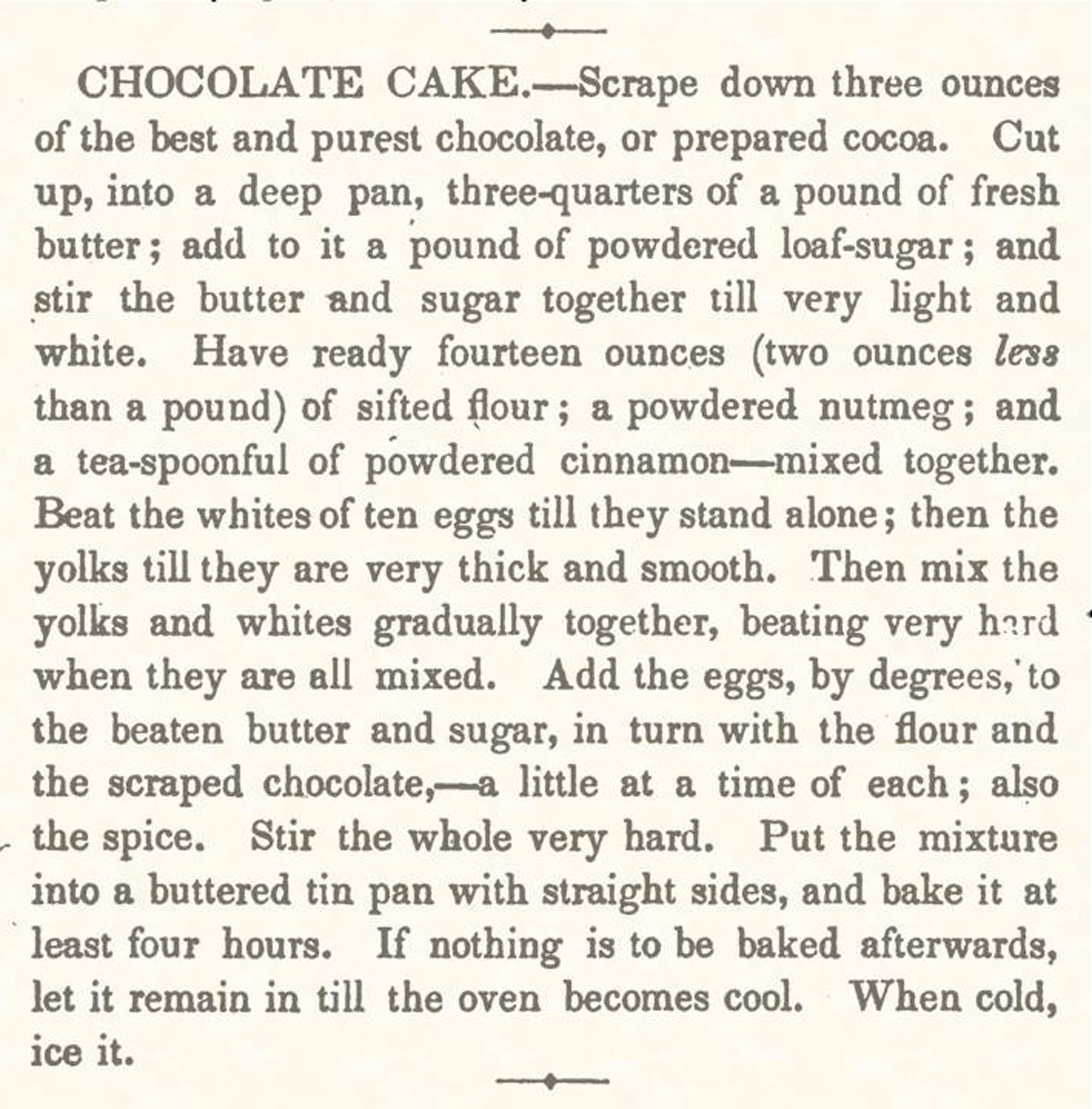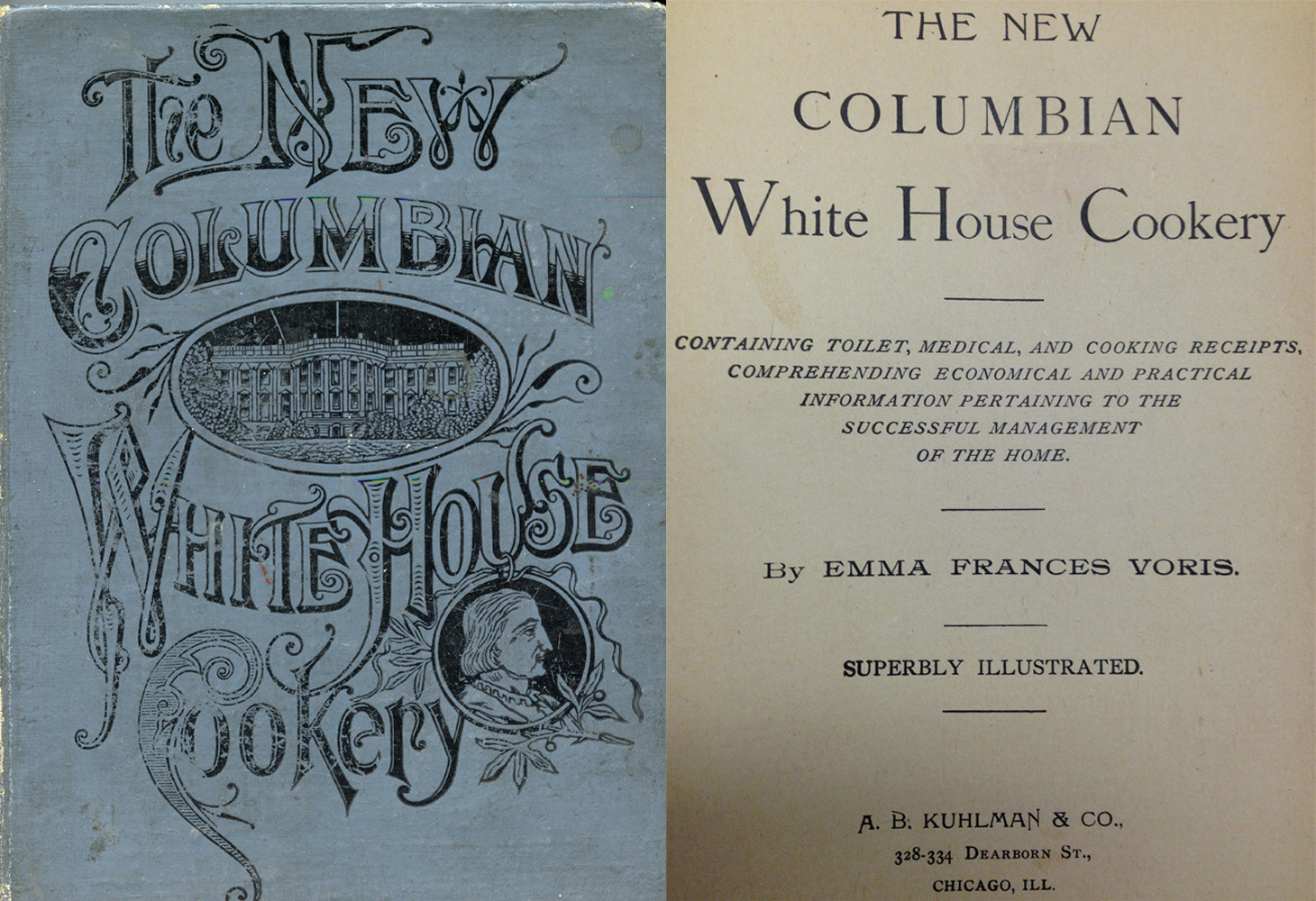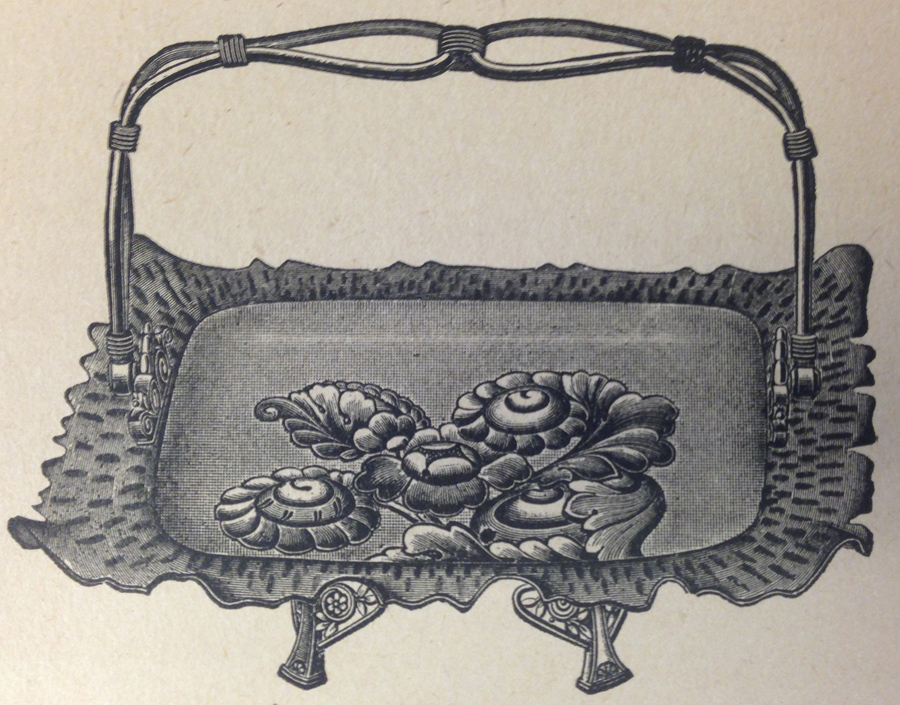February is upon us – the shortest month, although in Michigan it seems long and cold. Valentine’s Day, however, breaks the month neatly in the middle, and cheers us up with its signature food: chocolate.
There’s a long fascinating history of how chocolate came to be identified with love, seduction, and indulgence, from the perquisite of Aztec royalty, through the fashionable European beverage Dickens used as a symbol of aristocratic excess in Tale of Two Cities, all the way to that heart-shaped box you may be thinking of buying.
The first chocolate cake recipe in an American cookbook (as far as we know) is from 1847, The Lady’s Receipt Book, by Eliza Leslie.

Chocolate cake recipe, The Lady’s Receipt Book, 1847, Eliza Leslie, p. 201
However, this seems to be an isolated instance. Chocolate cake recipes didn’t become a regular feature of American cookbooks for roughly another half-century. Moreover, in late 19th centurty cookbooks “Chocolate Cake” might still mean a white or yellow cake with chocolate frosting, such as one we have in Household manual: Modern Menus and Recipes, an advertising cookbook put out by grocers and wine importers O’Brien and Company of Detroit in 1897
Brownies start to show up in American cookbooks around the turn of the century, probably the earliest brownie recipes we have in the JBLCA are in The Cook's Treasure House, ca 1900.
That American classic, the Chocolate Chip Cookie, was invented by Ruth Wakefield at her Toll House Inn sometime in the 1930’s. She published the recipe as Toll House Chocolate Crunch Cookies in her Ruth Wakefield's Toll House Tried and True Recipes some years later.
Historic American recipes for chocolate baked goods are much less intense than modern ones. Flourless chocolate cakes and dessert names like “Death by Chocolate” are a relatively recent development. 19th and early 20th century American recipes for chocolate cakes and cookies are quite mild.
This month’s recipe, from Emma Frances Voris’ New Columbian White House Cookery, ca. 1893, originally called for just three ounces of chocolate to a pound of sugar. Leslie’s book has a recipe for Chocolate Puffs with even less chocolate.

New Columbian White House Cookery: Containing Toilet, Medical, and Cooking Receipts, Comprehending Economical and Practical Information Pertaining to the Successful Management of the Home /by Emma Frances Voris. Chicago, Ill. :A.B. Kuhlman & Co.
Here's the original recipe
Put 3 ounces of plain chocolate in a pan and melt on a slow fire; then work to a thick paste with 1 pound of powdered sugar and the whites of 3 eggs; roll the mixture down to the thickness of about one-quarter of an inch; cut it in small, round pieces with a paste cutter, either plain or scalloped; butter a pan slightly, and dust it with flour and sugar in equal quantities; place the pieces of paste or mixture, and bake in a hot but not too quick oven.

I increased the amount of chocolate in these, because I found the original proportions tooth-achingly sweet.
Modern interpretation
4oz unsweetened chocolate
1 lb. powdered sugar (~3 3/4 c before sifting)
3 egg whites, from large eggs
- Preheat oven to 375°
- Grease cookie sheets and sprinkle lightly with equal amounts of flour and granulated sugar (use parchment paper or a silicon baking mat and omit the flour for a gluten-free version).
- Melt the chocolate in a large bowl over hot water
- Beat the egg whites just enough to break them up
- Let chocolate cool briefly and beat in egg whites
- Sift powdered sugar, and beat it into the chocolate mixture to form a soft dough.
- Form balls of dough ~1 1/2 tsp each. (A 1 1/2 tsp scoop is perfect for these.)
- Place on prepared cookie sheet, leaving 1 1/2” between cookies.
- Bake 11 minutes until puffed and set.
- Let cool on baking sheets before depanning.
Makes about 75 cookies
For something more like the original, use only 3 ounces of chocolate, roll the dough out on powdered sugar 1/4" thick, and cut with a 1 ½” or 2” cutter.
However, the version with more chocolate is better for you. Chocolate - especially dark chocolate - has significant health benefits. Here's a list from the UM Integrative Medicine site
- Contains flavonoids called procyanidins & epicatechins; flavonoids are part of a group of antioxidants known as polyphenols and are found in a variety of foods including dark chocolate, tea, red wine, and various fruits and vegetables
- Decreases LDL (“bad”) cholesterol oxidation
- Reduces the risk of blood clots
- Increases blood flow in arteries and the heart
- May lower high blood pressure
- Cocoa may have a beneficial effect on cholesterol levels because it consists mainly of stearic acid and oleic acid. Stearic acid is a saturated fat, but unlike most saturated fatty acids, it does not raise blood cholesterol levels. Oleic acid, a monounsaturated fat, does not raise cholesterol and may even reduce it.
- May improve mood and pleasure by boosting serotonin and endorphin levels in the brain
- Regular intake is associated with better cognitive performance in the elderly
- Contains a number of minerals, including calcium, magnesium, and potassium
So, go ahead, enjoy that Valentine's day chcocolate guilt-free.

Illustration New Columbia White House Cookery, p. 200
Further reading
Michael and Sophie Coe’s groundbreaking True History of Chocolate
Marcy Norton’s Sacred Gifts, Profane Pleasures.
A good thumbnail history of chocolate
Chocolate on The Food Timeline
Q&A on chocolate from the Mayo Clinic
Article on health claims for chcolate from NIH
“Brain Cannabinoids in Chocolate” Nature, Vol 382, August 22, 1996, pp. 677-678 by diTomaso, E., Beltramo, M., and Piomelli, D.
“Trick or Treat from Food Endocannabinoids?”, Nature, Vol. 396, December 17, 1998, pp. 636-637, by DiMarzo, Sepe, DePetrocellis, Berger, Crozier, Fride and Mechoulam. (A letter to Nature raising questions and concerns about the original report of endocannabinoids in chocolate, plus a reply by two of the authors of the report, Beltramo and Piomelli.)
“Dark chocolate consumption improves leukocyte adhesion factors and vascular function in overweight men” FASEB J March 2014 28:1464-1473; published ahead of print December 3, 2013, doi:10.1096/fj.13-239384